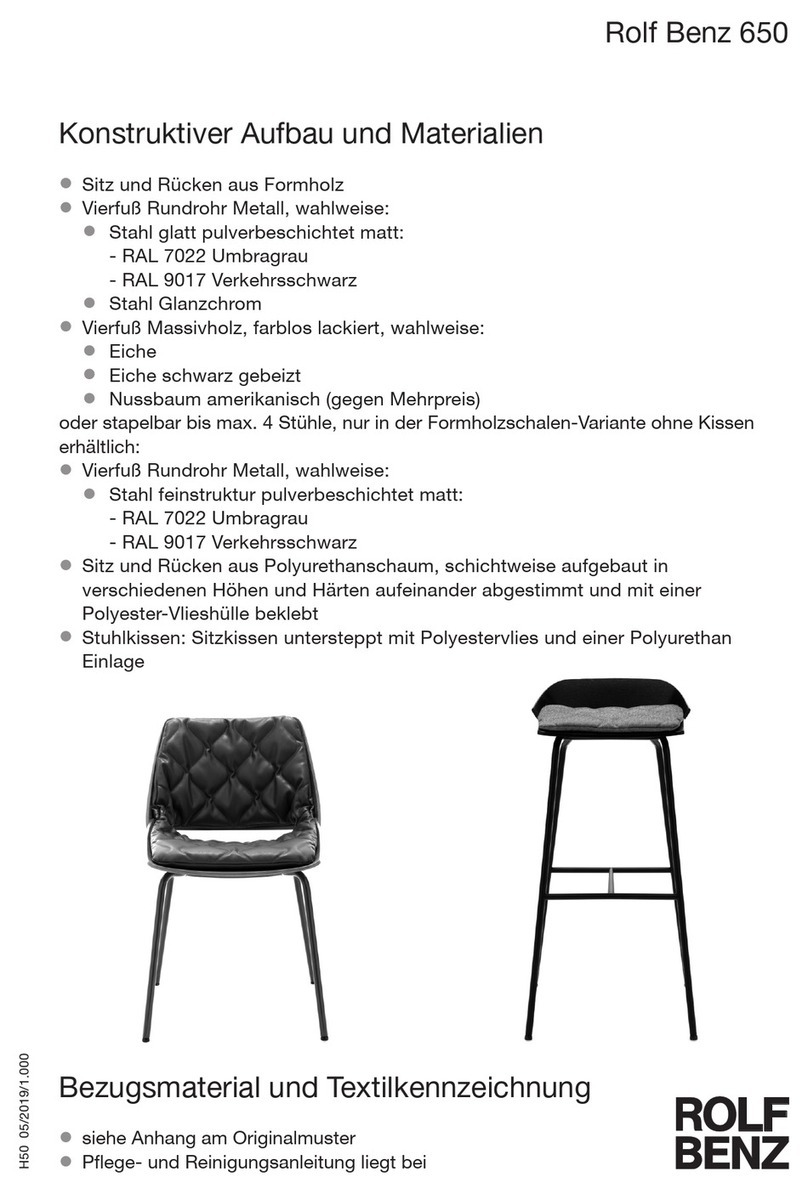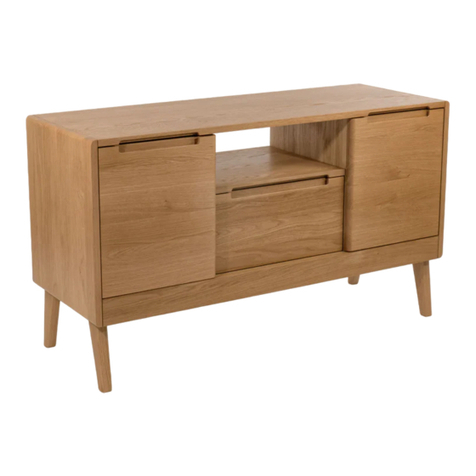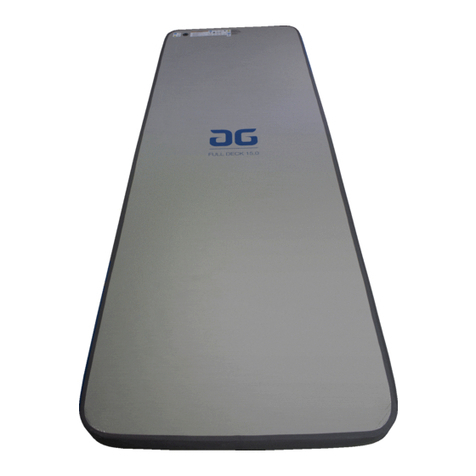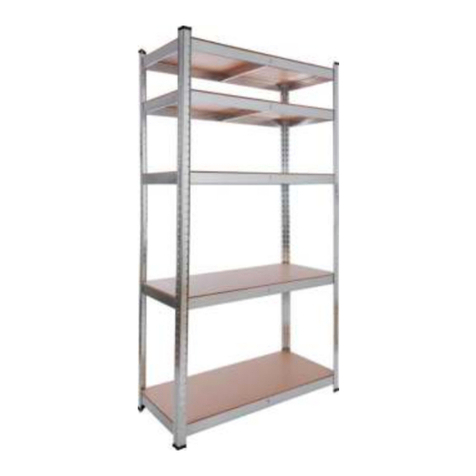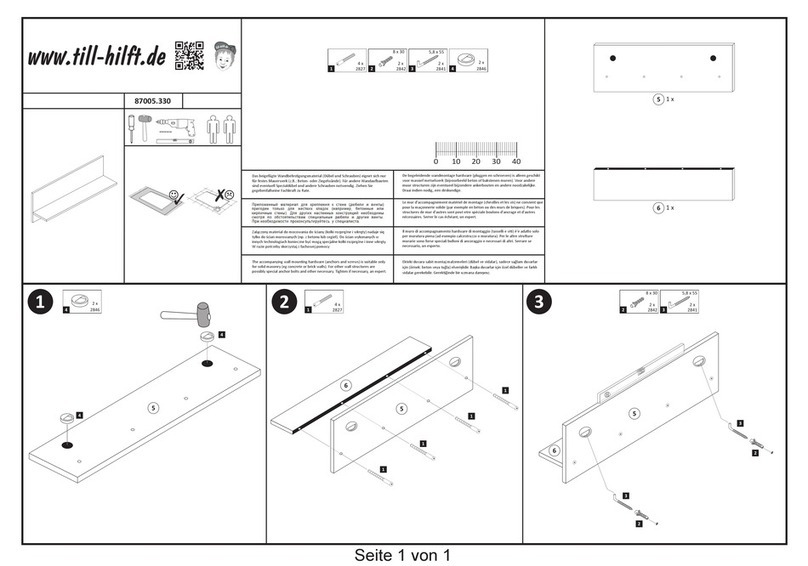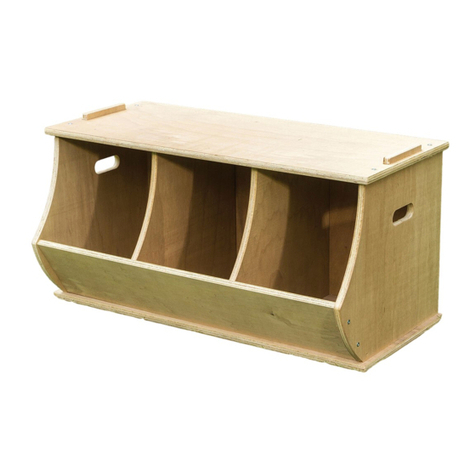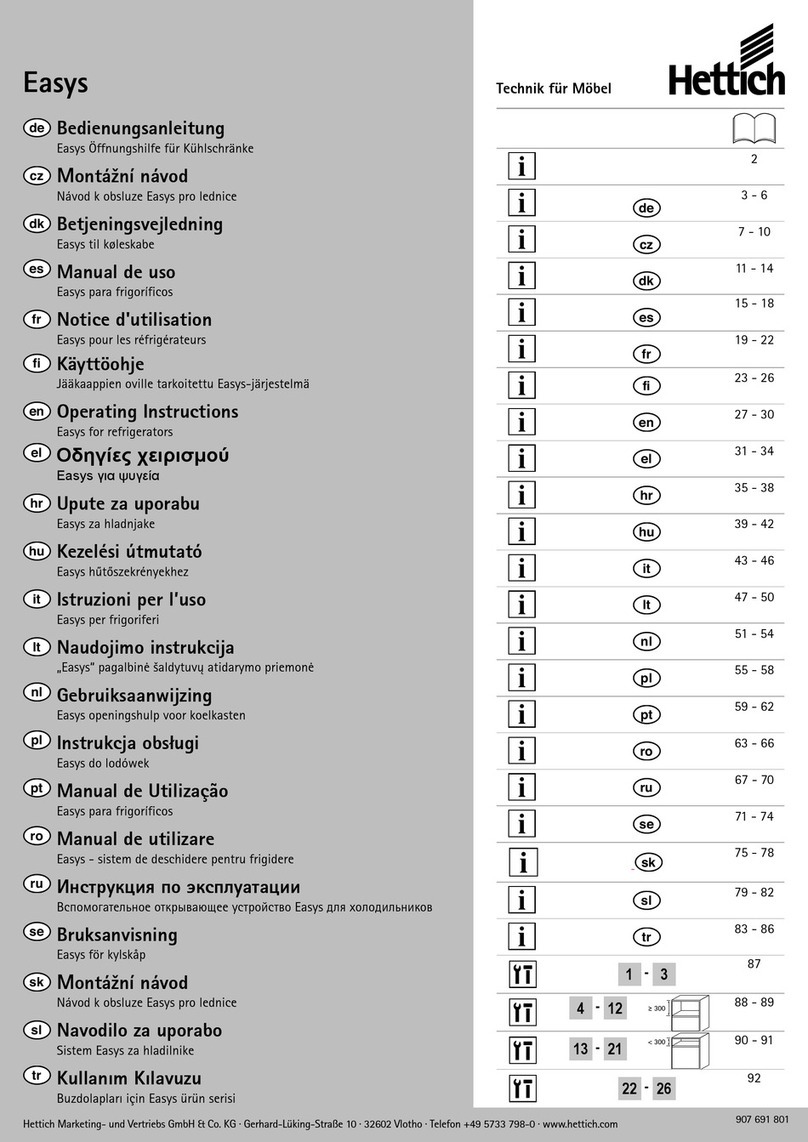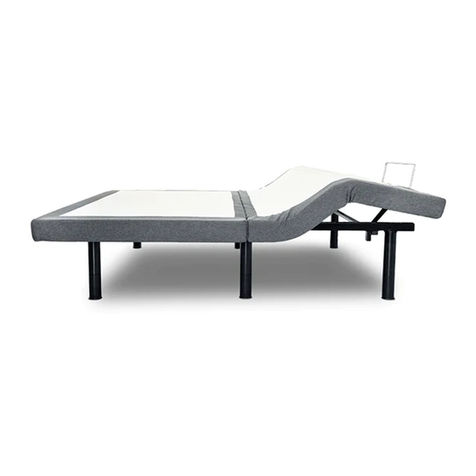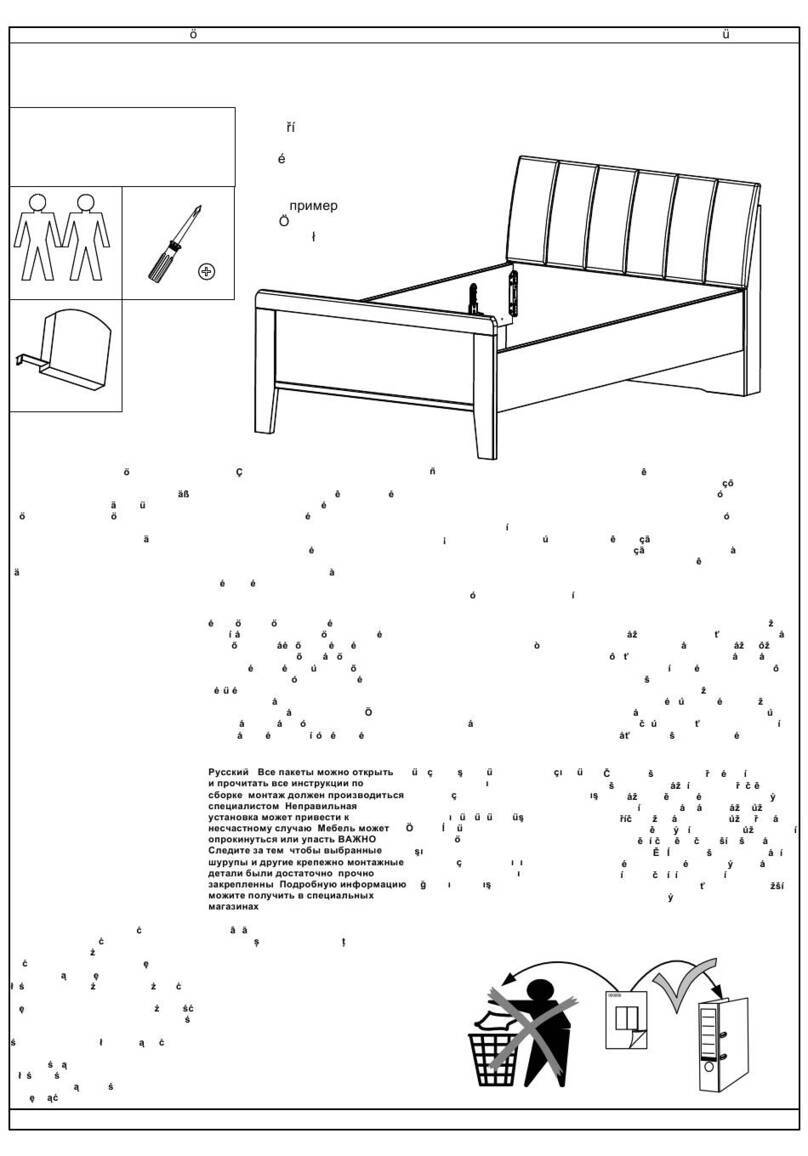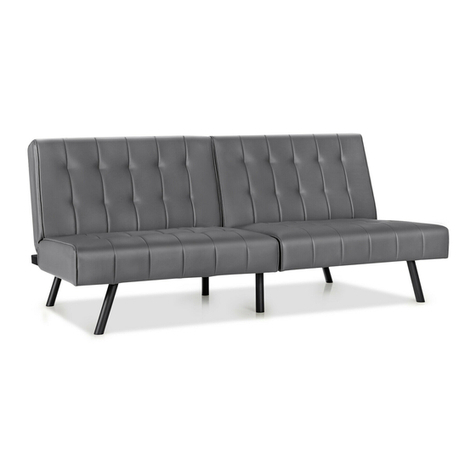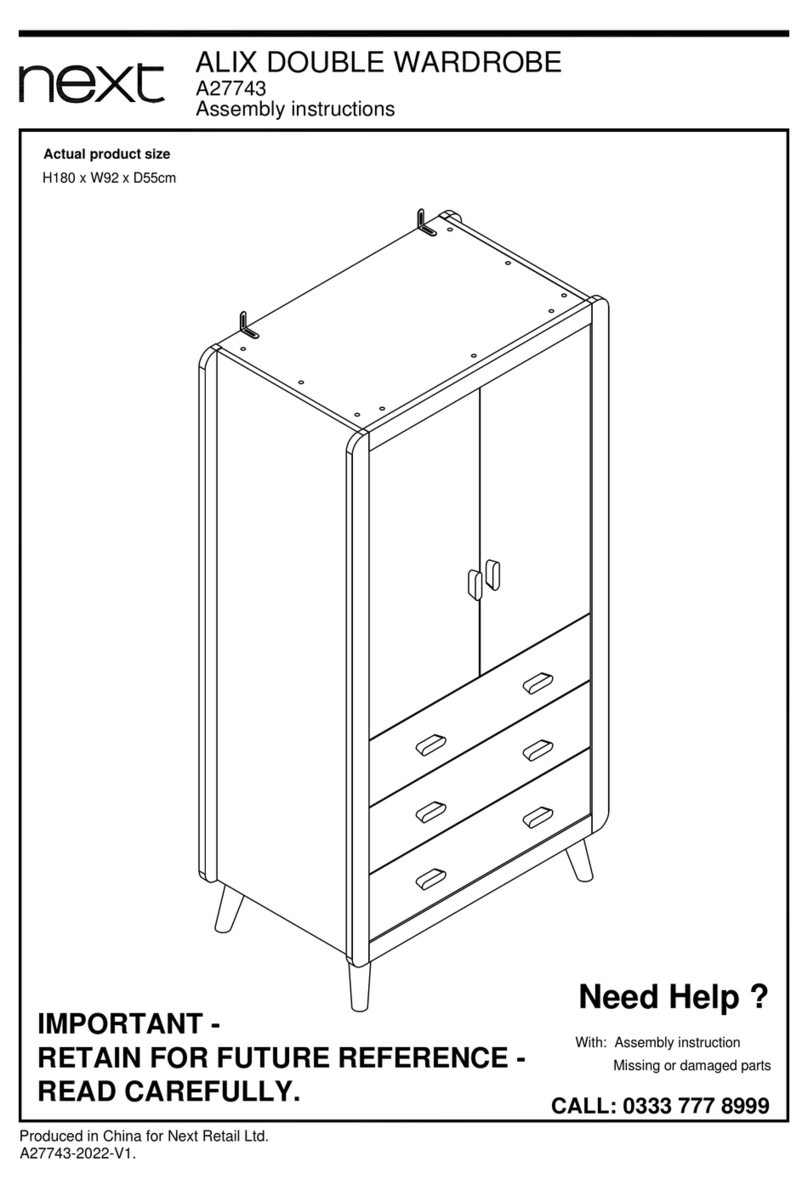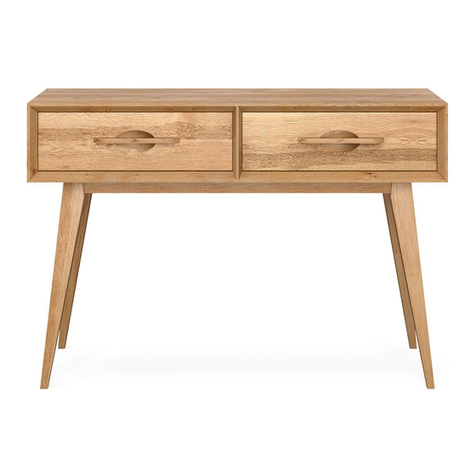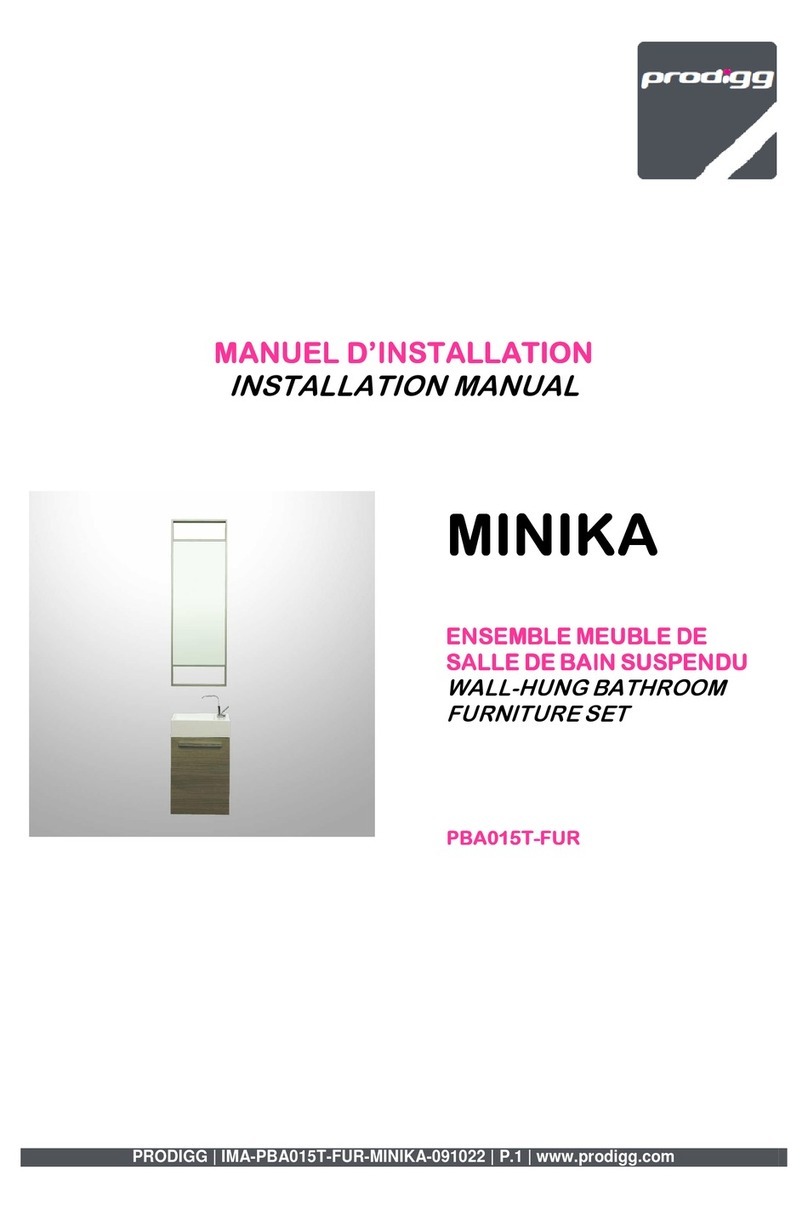Rolf Benz 988 User manual

Konstruktiver Aufbau und Materialien
Typ: Esstischprogramm aus Massivholz
Maße: Tischhöhe: 75 cm
- 220, 240 oder 260 x 107 cm
Platte: Massivholz: geölt oder farblos lackiert
- Eiche massiv natur
- Eiche massiv schwarz gebeizt
- Nussbaum amerikanisch massiv natur
Gestell: Massivholz: farblos lackiert
- Eiche massiv natur
- Eiche massiv schwarz gebeizt
- Nussbaum amerikanisch massiv natur
Die Ausführung des Gestells entspricht der Ausführung der Platte.
Design: Bodo Sperlein
Rolf Benz AG & Co. KG
Haiterbacher Straße 104
D-72202 Nagold
www.rolf-benz.com
988 10/2018/1.000
Rolf Benz 988

Viel Freude…
...wünschen wir Ihnen mit Ihrem neuen Rolf Benz Produkt.
Diese Produktinformation gibt Ihnen Hinweise zur sachgerechten Unterhaltspflege für
die Werterhaltung und Freude am Möbel. Gegebenenfalls beinhaltet sie eine Anleitung
für den Zusammenbau des Möbels. Wir empfehlen, diese Produktinformation auf-
merksam zu lesen und sorgfältig aufzubewahren, um bei Bedarf darin nachschlagen
zu können.
Merkmale und Eigenschaften von Massivholz
Unsere Möbel sollen Ihnen viele Jahre dienen. Deshalb vermitteln wir Ihnen einige
Hinweise zu ihrer ordnungsgemäßen Nutzung. Es ist zu beachten, dass die Einhaltung
der Anweisungen aus den Anleitungen die Dauerhaftigkeit und die Ästhetik der Möbel
verlängert.
Alle unsere Produkte sind aus Holz höchster Qualität hergestellt und jedes Möbelstück
wurde mit großer Sorgfalt und handwerklichem Können gefertigt. Da unsere Möbel
aus vielen hölzernen Elementen mit verschiedenen Abmessungen gefertigt werden,
können die fertigen Möbel Farbunterschiede aufweisen.
Massives Holz ist ein lebendes Material. Das Holz arbeitet ständig, d.h. es passt sich
an das sich ändernde Klima an. Es dehnt und verkürzt sich unter dem Einfluss von
Luftfeuchte und Wärme. In diesem Zusammenhang können die Verbindungen der ein-
zelnen Elemente, aus denen das Produkt besteht, deutlicher hervortreten. Es können
ebenfalls leichte Wölbungen und Risse auftreten, die für Holz charakteristisch sind.
Offene Stellen und größere Risse werden vorher per Hand von losem Material gesäu-
bert und ausgearbeitet.
Kleinste Haar-Risse, auch neben Ästen auf der Tischplatte sind möglich und zulässig.
Sie können unter Umständen auch erst im Gebrauch, wenn die Tischplatte trocknet,
entstehen. Jede Massivholzplatte ist ein in Farbe, Struktur und Ausprägung der aus-
gefüllten Stellen einmaliges Unikat.

Um Schäden am Holz zu vermeiden, sollte die Raumluft 45 bis 65% relative Luft-
feuchtigkeit und eine Temperatur von 15 bis 25°C haben.
Durch Lichteinwirkung wird sich die Farbe der lackierten Holzoberflächen vor allem
in den ersten Wochen und Monaten verändern. Deshalb bitte die Flächen in der
Anfangszeit nur kurzfristig mit Dekorgegenständen, Tischsets und ähnlichem abde-
cken. Unter langfristig abgedeckten Stellen bleibt das Holz heller und führt damit zu
deutlich sichtbaren Farbunterschieden.
Heiße Gefäße und Behälter mit Wasser (z.B. Krüge, Vasen, Blumentöpfe) sind nicht
direkt auf den Tisch zu stellen, es sei denn, wir verwenden spezielle Unterlagen.
Auch bei scharfkantigen Gegenständen sind immer Unterlagen zu verwenden, um
die Oberfläche der Tischplatte zu schützen.
Strahler mit Hitzeeinwirkung auf die Tischoberseite gerichtet, können auf Dauer zu
einer holen Verkrümmung der Platte führen und sollten deshalb vermieden werden.

Belastungs- und Sicherheitshinweise
Die Belastung der Tischkante sollte 50 kg nicht überschreiten.
Es darf sich auf keinen Fall auf die Tischkante gesetzt oder gestellt werden. Für Schä-
den, die als Folge bestimmungswidriger Benutzung auftreten, übernehmen wir keine
Haftung.
Allgemeine Pflegehinweise
Ihr Möbelstück benötigt eine regelmäßige, vorbeugende Pflege, um seine Schönheit
langfristig zu erhalten.
Reinigung und Pflege geölter Holzoberflächen
Möbelteile aus Massivholz ändern Ihre Dimension in Abhängigkeit der Reinigung. Für
die Reinigung genügt es, die Tischplatte feucht abzuwischen und trocken zu reiben.
Flüssigkeiten auf der Fläche sofort mit feuchtem Lappen abwischen.
Stark alkalische Reiniger und Seifen sowie scheuernde Putzutensilien verletzen die
Oberfläche und verringern den Schutz.
Sobald sich die Oberfläche trocken anfühlt und Flüssigkeiten nicht mehr abperlen ist
eine Nachbehandlung nötig.
Entfernen von Flecken und kleinen Beschädigungen
1. Holzflächen am Vorabend mit feuchtem Lappen gut reinigen und trocknen.
2. Ganze Holzfläche mit beiliegendem Schleifvlies oder feinem Schleifpapier –
Körnung 280 oder feiner - gleichmäßig in Holzfaserrichtung anschleifen.
3. Holzflächen noch einmal mit einem feuchten Tuch gut reinigen und über Nacht
trocknen lassen.
4. Handschuhe anziehen und auf gute Raumbelüftung achten.
5. Pflege Öl mit Lappen gleichmäßig in Faserrichtung auf Holzflächen aufbringen bis
das Holz gleichmäßig geölt ist.
6. Mit zweitem Lappen die Oberfläche in Faserrichtung trockenreiben.
Achtung: Ölgetränkte Lappen können sich selbst entzünden. Mit Öl getränkte
Lappen ins Wasser tauchen und nass entsorgen.

Anhaftende Verschmutzungen mit feuchtem Tuch oder Schwamm mit milder Spülmit-
tel- oder Haushaltsreinigerlösung abwischen (Reinigungslösung gegebenenfalls eini-
ge Zeit einwirken lassen), mit sauberem feuchtem Tuch gründlich nachwischen und
abschließend trockenreiben, um Wasserflecken zu vermeiden.
Bitte keine hoch alkalischen Reinigungsmittel verwenden, sie können Flecken
auf der Metalloberfläche hervorrufen. Bitte verwenden Sie keine ätzenden oder
scheuernden Reinigungsmittel, da diese die Oberfläche angreifen können!
Metallreinigungsmittel können an Bezugsmaterialien bleibende Flecken auslösen.
Deshalb bitte den Kontakt vermeiden.
Reinigung und Pflege von lackierten Holz-Oberflächen
Staub und lose Krümel / Schmutz regelmäßig mit weichem, trockenem Tuch entfernen.
Gelegentlich die Oberfläche mit einem nur leicht angefeuchteten Tuch, falls notwendig,
mit geringem Zusatz eines milden Spülmittels oder Haushaltsreinigers, abwischen. Gut
geeignet sind feine Microfasertücher. Abschließend gründlich trockenreiben, um das
Eindringen von Feuchtigkeit in das Holz zu vermeiden. Stark alkalische Reiniger, Seifen
sowie scheuernde Putzutensilien vermeiden. Sie können die Oberfläche verletzen und
den Oberflächenschutz verringern. Bei Verwendung handelsüblicher Holzpflegemittel
beachten Sie bitte die Herstellerangaben, öl- oder silikonhaltige Pflegemittel können
einen unerwünschten Glanz hinterlassen.
Zur schonenden, porentiefen Pflege und Auffrischung von Möbeloberflächen raten wir
nach Reinigung der Flächen etwa 2 x pro Jahr den Auftrag eines Möbelpflegemittels lt.
Gebrauchsanweisung. Dabei empfehlen wir, das LCK Reinigungsset „Silvapur“ (Reini-
ger und Lotion für lackierte Oberflächen) nach Anleitung zu verwenden.

Weitere Informationen zur Möbelpflege
Bei sämtlichen Fragen zum Thema Reinigung und Pflege von Möbeln wenden Sie
sich bitte an:
LCK Vertriebs GmbH
Im Unterfeld 3
D-76698 Ubstadt-Weiher
Telefon: + 49 (0) 7251 / 9625-0
E-Mail: [email protected]
Unter www.lck-rolfbenz.com finden Sie Produkte zur vorbeugenden Reinigung und
Pflege sowie ausgewählte Spezialreiniger für alle Lederarten, textile Polstermöbel,
Edelstahloberflächen, Holz, Stein uvm.

Montageanleitung
Montagedauer
Mit 2 Personen ca. 30 Minuten
Werkzeug
1x Akkuschrauber mit Biteinsatz Pozidriv PZ3
Stückliste
1 x Tischplatte
1 x Untergestell
1 x Beschlagbeutel mit 18 Schrauben 6,4x30 mm
Montage Schritt 1
•Untergestell am gewünschten Ort
platzieren
Montage Schritt 2
•
Tischplatte auf das Untergestell
legen.

Montage Schritt 3
•
Bei der Auflage der Platte darauf ach-
ten, dass die beiden Markierungen auf
der Platte und auf dem Untergestell
übereinstimmen.
Montage Schritt 4
•
Befestigen Sie die Platte am Unterge-
stell von unten durch die Montage-
platte an den vorgegebenen Bohrungen.

Englisch
Design structure and materials
Type: Dining table of solid wood
Dimensions: Hight: 75 cm
- 220, 240 or 260 x 107 cm
Table top: Solid wood: oiled or clear varnish
- Solid oak natural
- Solid oak stained black
- Solid American walnut natural
Frame: Solid wood: clear varnish
- Solid oak natural
- Solid oak stained black
- Solid American walnut natural
The frame version corresponds to the table top version.
Design: Bodo Sperlein
Rolf Benz AG & Co. KG
Haiterbacher Straße 104
D-72202 Nagold
www.rolf-benz.com

Enjoy…
...your new Rolf Benz product.
This product information gives you tips on the appropriate general maintenance of
your furniture, and how to prolong your enjoyment of the furniture and to maintain
its value. It also includes, where applicable, a guide to assembling the furniture. We
recommend that you read this production information carefully and keep it in a safe
place so that you can refer to it when you need to.
Features and characteristics of solid wood
Our furniture should serve for many years. So we provide you with a few tips on how
to look after the pieces properly. Please note that following these instructions will in-
crease the lifespan of the furniture and enhance its appearance.
All of our products are made from the highest quality wood and each piece has been
manufactured with great care and craftsmanship. The finished items of furniture may
contain colour differences due to being made from numerous wood elements of dif-
ferent dimensions.
Solid wood is a living material. The wood is constantly working, i.e. it adapts to the
changing climate. It expands and contracts under the influence of humidity and
warmth. As such, connections between the individual elements in the product may ap-
pear more noticeable. There may be slight bowing or cracking, as is typical of wood.
Any openings or larger cracks are cleaned of any loose material and prepared by hand
beforehand. Small hairline cracks as well as knots in the table top are possible and
entirely normal. In some circumstances, they may first appear during use when the
table top dries out. Every solid wood table is unique in terms of its colour, structure
and the form of any filled-in spots.

To avoid damage to the wood, a relative humidity of 45 to 65% and temperature of
15 to 25°C should be maintained. The effect of light may cause the colour of the
painted wood surface to change over the initial weeks and months in particular.
Please therefore do not leave decorative objects, table sets or the like on the
surfaces for long, especially at the start. The wood will remain lighter in colour
beneath any areas covered over for a long time, thereby leading to significant and
visible colour differences. Hot vessels and containers of water (e.g. jugs, vases, flo-
wer pots) should not be placed directly on the table unless special protective mats
are used. Protective mats should always also be used in the case of sharp-edged
objects to prevent the surface of the table top from being damaged. Any spotlights
with a heat effect which are directed at the table top may cause a bowing of the table
top over time and should therefore be avoided.
Load and safety information
Load placed on the table‘s edge should not exceed 50 kg.
Do not sit or stand on the table’s edge under any circumstances. We do not accept
any liability for damage caused by improper use.
General care instructions
Your coffee table/side table needs regular preventive cleaning
and care in order to maintain its beauty over a long period of time.

Cleaning and maintenance of oiled wood surfaces
Items of furniture made from solid wood may change in size as a result of cleaning. It
is sufficient to wipe the table top down with a damp cloth and rub dry.
Any liquids spilt on the surface should be wiped up with a damp cloth immediately.
Use of alkaline soaps and cleaning agents or scourers can harm the surface and re-
duce the protection.
As soon as the surface feels dry and the liquid is no longer beading, a secondary
treatment is required. Removing any stains and minor damage
1. Clean the wooden surface with a damp cloth the evening beforehand and dry.
2. Sand down the entire wooden surface evenly in the direction of the wood grain
using an abrasive fabric or fine sandpaper (280 grit).
3. Wipe down the wood surface again with a damp cloth and leave to dry over-night.
4. Put on gloves and ensure the room is well ventilated.
5. Apply oil evenly with a cloth in the direction of the wood grain until the wood is
oiled evenly across its surface.
6. Rub the surface dry in the direction of the wood grain using a second cloth.
NB: Oil-soaked clothes may spontaneously ignite. Submerse oil-soaked clothes
in water and discard while wet.
Any adhering dirt can be wiped off with a damp cloth or sponge with mild washing-up
liquid or household cleaner solution (if necessary, leave the cleaner solution a little
time to work), then wipe thoroughly with a clean damp cloth and then rub dry to avoid
water spots.
Do not use highly alkaline cleaning products – these may cause staining on the
metal surface. Do not use corrosive or abrasive cleaning products as these can
damage the surface.
Metal cleaning agents may stain the cover materials. You should therefore avoid con-
tact with them.

Cleaning and maintenance of painted/coated wood sur-
faces
Cleaning and maintenance of painted/coated wood surfaces
Regularly use a soft dry cloth to remove dust and loose crumbs / dirt.
If necessary, you can occasionally wipe the surface with a very slightly damp cloth with
a small amount of mild washing-up liquid or household cleaner. Fine microfibre cloths
work well for this job.
Finally, rub dry thoroughly to make sure no moisture penetrates the wood.
Avoid the use of strongly alkaline cleaners, soaps or abrasive cleaning utensils. These
can damage the surface and reduce the surface protection.
If you use commercially available wood-care products, please read the manufacturer‘s
instructions: maintenance products containing oil or silicone may leave behind an un-
welcome sheen.
After cleaning the surfaces, we recommend that you use a furniture care product accor-
ding to the instructions about twice a year to give the surfaces of the furniture a gentle,
revitalising deep-clean.
For this we recommend you use the LCK „Silvapur“ cleaning kit (cleaner and lotion for
painted/varnished surfaces), according to the instructions.

Further information about furniture care
For any questions about cleaning and care of furniture, please contact:
LCK Vertriebs GmbH
Im Unterfeld 3
D-76698 Ubstadt-Weiher
Germany
Phone: + 49 (0) 7251 / 9625-0
E-mail: [email protected]
You will find products for preventive cleaning and care and selected special clea-
ners for all types of leather, textile upholstery, stainless steel surfaces, wood,
stone, and much more, at www.lck-rolfbenz.com.

Assembly instructions
Assembly time
Approx. 30 minutes with 2 people
Tool
1x cordless screwdriver with Pozidriv PZ3 bit holder
Parts list
1 x table top
1 x base frame
1 x bag of fittings with 18 screws 6.4x30 mm
Assembly step 1
•Position the base frame at the
required location.
Assembly step 2
•
Place the table top on the base
frame.

Assembly step 3
•
When placing the table top, ensure that
the two markings on the table top
match those on the base frame.
Assembly step 4
•
Screw the table top to the base frame
from underneath through the assembly
plate using the predrilled holes.

Français
Structure et Matériaux
Type: Table de sale à manger bois massif
Dimensiosn: Hauteur: 75 cm
- 220, 240 ou 260 x 107 cm
Plateau: Bois massif : huilé ou laqué incolore
- Chêne massif naturel
- Chêne massif et teinté noir
- Noyer d‘Amérique massif naturel
Structure: Bois massif : laqué incolore
- Chêne massif naturel
- Chêne massif et teinté noir
- Noyer d‘Amérique massif naturel
La finition de la structure est fonction de celle du plateau.
Design: Bodo Sperlein
Rolf Benz AG & Co. KG
Haiterbacher Straße 104
D-72202 Nagold
www.rolf-benz.com

Nous vous souhaitons…
...beaucoup de satisfaction avec votre nouveau produit Rolf Benz.
Cette information vous donne tous les conseils d‘entretien indispensables pour que-
votre meuble vous procure longtemps une satisfaction sans cesse renouvelée. Parail-
leurs, elle contient éventuellement une notice de montage du meuble que vousvenez
d‘acquérir. Nous vous recommandons de lire attentivement ce document et de le
conserver en lieu sûr pour pouvoir le consulter en cas de besoin.
Caractéristiques et propriétés du bois massif
Nos meubles sont conçus pour vous accompagner durant de très longues années.
C‘est pour cela que nous tenons à vous donner quelques conseils afin qu‘ils vous
procurent longtemps une grande satisfaction. En effet, il faut toujours garder à l‘esprit
que le respect des consignes énoncées dans les notices d‘utilisation prolonge notab-
lement la longévité et l‘esthétique de chaque meuble.
Tous nos produits sont fabriqués en bois d‘excellente qualité. Chacun d‘entre eux a
été réalisé avec le plus grand soin et un savoir-faire qui s‘inscrit dans la plus pure tra-
dition de l‘artisanat. Etant donné que nos meubles intègrent de nombreux éléments en
bois de dimensions différentes, il est tout à fait possible - et normal - que les produits
finis présentent des différences de teinte.
Le bois massif est un matériau vivant qui travaille constamment pour s‘adapter aux
changements de température et d‘humidité, lesquels induisent une dilatation ou, au
contraire, une rétractation du matériau. Ceci explique que les assemblages des diffé-
rents éléments constitutifs d‘un meuble peuvent apparaître plus nettement. Les légers
bombements et fissures qui peuvent également se produire comptent parmi les ca-
ractéristiques du bois massif.
Avant d‘être rebouchés, les creux et les fissures plus importantes sont nettoyés à la
main afin d‘être débarrassés des fibres tendres.
L‘apparition de minuscules fissures, y compris à hauteur des noeuds, sur le plateau de
table est possible et normale. Il arrive parfois que ces fissures ne deviennent visibles
qu‘en cours d‘utilisation, lorsque le plateau sèche. Chaque plateau en bois massif
est unique sur le plan de sa teinte, de sa structure et des emplacements qui ont été
soigneusement rebouchés.

Pour éviter que le bois s‘abîme au fil du temps, le taux d‘humidité relative de la pièce où
ils sont installés devrait être compris entre 45 et 65 %, et la température devrait toujours
se situer entre 15 et 25°C.
Sous l‘effet de la lumière, la teinte des surfaces en bois protégé par une laque transpa-
rente va changer, surtout au cours des premières semaines, voire des premiers mois.
C‘est la raison pour laquelle il faut veiller, pendant toute cette période, à ne dépo-
ser que pour une courte durée les objets de décoration, les sets de table et autres
sur la table. En effet, si ces objets sont laissés en permanence sur la table, le bois va
conserver sa teinte d‘origine, donc plus claire, à l‘emplacement où se trouvent les ob-
jets. Les différences de teintes seront alors nettement visibles.
Ne jamais déposer des récipients très chauds ou contenant de l‘eau (p. ex. carafes,
vases, pots de fleurs) directement sur la table, sauf si ces objets reposent sur des sup-
ports adéquats.
De même, les objets présentant des arêtes vives doivent toujours être déposés sur des
supports adaptés pour protéger la surface de la table.
Les sources lumineuses émettent de la chaleur. Si elles sont dirigées directement sur le
dessus de la table, elles risquent de provoquer à la longue une déformation concave du
plateau. Ceci est donc à éviter absolument.

Remarques relatives à la charge maximale et à la
sécurité d‘utilisation
Le bord de la table ne doit en aucun cas être soumis à une charge supérieure à 50 kg.
Il est formellement déconseillé de s‘asseoir ou de monter sur le bord de la table. Nous
n‘endossons aucune responsabilité pour tout dommage résultant d‘une utilisation non
conforme à nos instructions.
Généralités concernant l’entretien
Votre meuble nécessite un entretien préventif, effectué à intervalles réguliers, qui lui
conservera toute sa beauté durant de longues années.
Nettoyage et entretien des surfaces en bois huilé
Les dimensions des éléments de meuble en bois massif changent en fonction de la
périodicité du nettoyage. Pour effectuer celui-ci, il suffit d‘essuyer le plateau avec un
linge humide puis de le sécher.
Les liquides renversés par mégarde doivent être épongés immédiatement avec un
chiffon humide.
Les nettoyants fortement alcalins ainsi que les savons et les ustensiles de nettoyage
abrasifs abîment la surface et en altèrent la protection d‘origine.
Un traitement d‘entretien devient nécessaire dès que la surface paraît sèche au tou-
cher et que les liquides ne déperlent plus. Détachage et réparation des petites dégra-
dations
1. La veille : nettoyer soigneusement les surfaces en bois avec un linge humide puis
les sécher.
2. Poncer toute les surfaces en utilisant l‘abrasif non-tissé fourni avec le produit ou
de la toile émeri fine – grain de 280 ou plus fin - et veiller à ce que le ponçage soit
bien régulier et toujours effectué dans le sens des fibres.
3. Nettoyer de nouveau les surfaces en bois à l‘aide d‘un linge humide et laisser
sécher pendant la nuit.
4. Enfiler des gants et veiller à une bonne aération de la pièce.
5. Appliquer soigneusement l‘huile d‘entretien dans le sens des fibres jusqu‘à ce que
le bois soit bien imprégné d‘huile de façon régulière.
6. Prendre un second chiffon et sécher la surface dans le sens des fibres.
Attention : les chiffons imbibés d‘huile d‘entretien risquent de s‘auto-enflammer.
C‘est pourquoi il faut toujours les plonger dans de l‘eau avant de les mettre au
rebut.
Table of contents
Languages:
Other Rolf Benz Indoor Furnishing manuals

Rolf Benz
Rolf Benz 340 Nova User manual

Rolf Benz
Rolf Benz 900 User manual
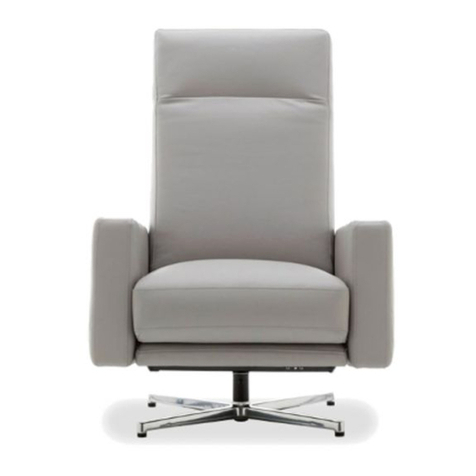
Rolf Benz
Rolf Benz P57 Series User manual

Rolf Benz
Rolf Benz 310 User manual
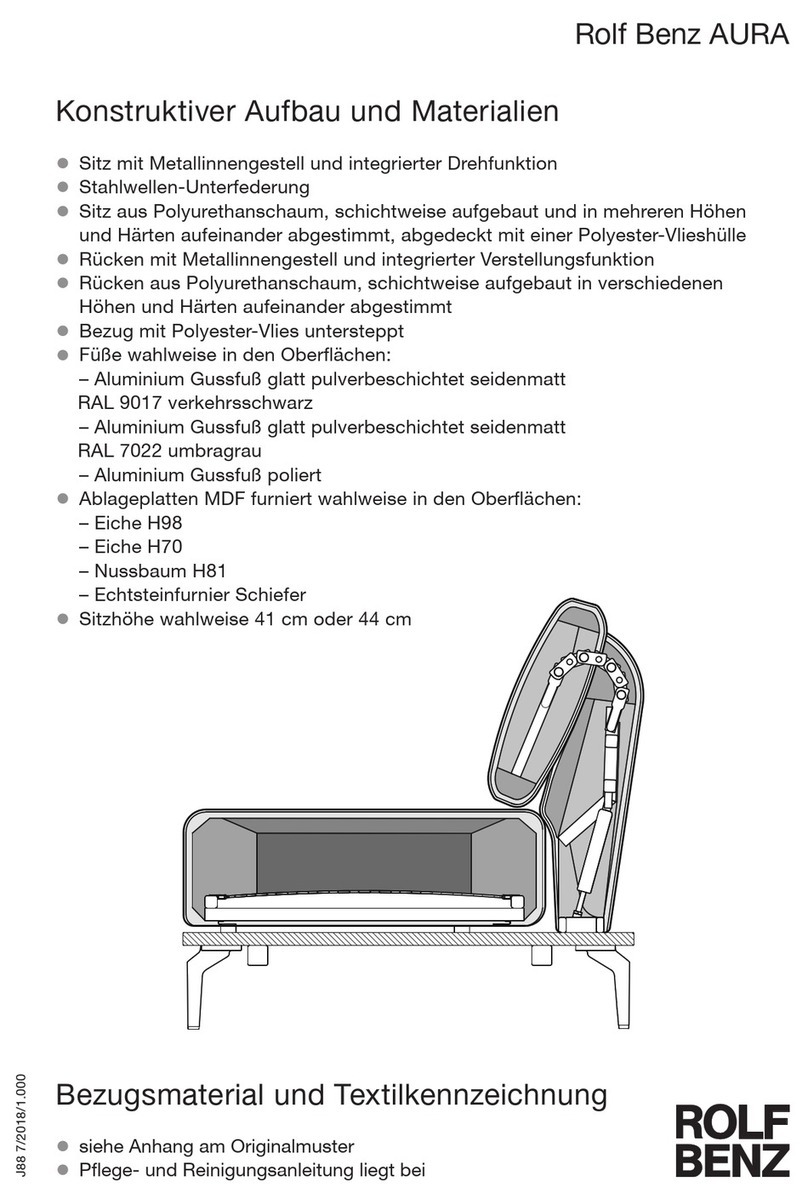
Rolf Benz
Rolf Benz Aura 388 User manual

Rolf Benz
Rolf Benz 50 User manual

Rolf Benz
Rolf Benz 8950 User manual
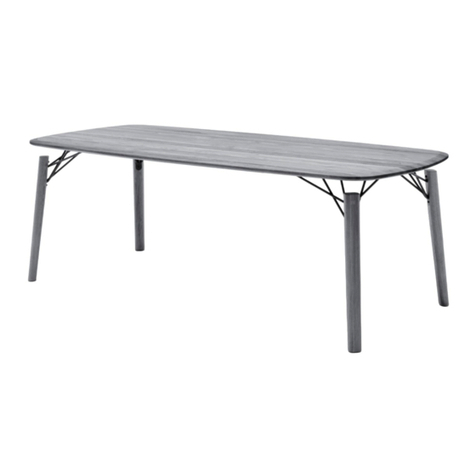
Rolf Benz
Rolf Benz 964 User manual

Rolf Benz
Rolf Benz 8290 User manual

Rolf Benz
Rolf Benz 909 User manual
Popular Indoor Furnishing manuals by other brands
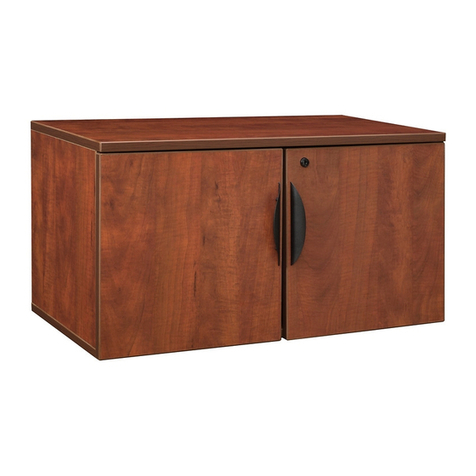
Regency
Regency LWMS3015 Assembly instructions

Furniture of America
Furniture of America CM7751C Assembly instructions

Safavieh Furniture
Safavieh Furniture Estella CNS5731 manual
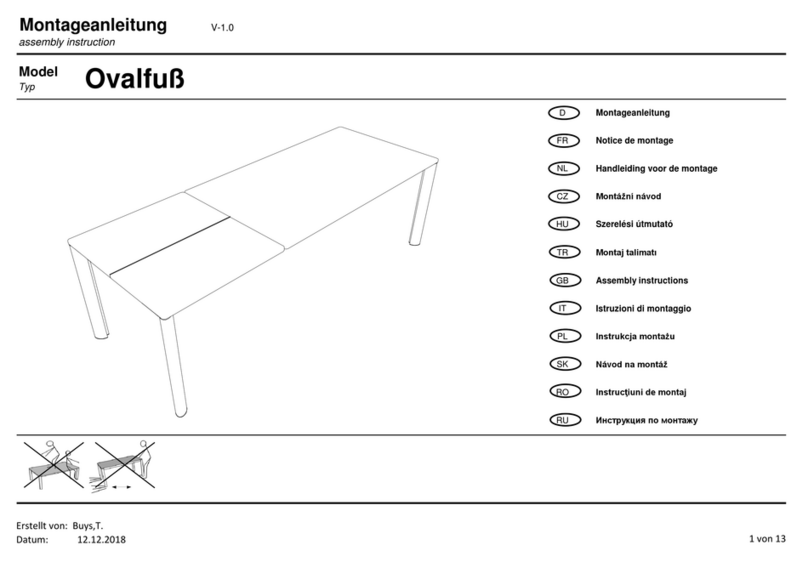
PLACES OF STYLE
PLACES OF STYLE Ovalfuss Assembly instruction
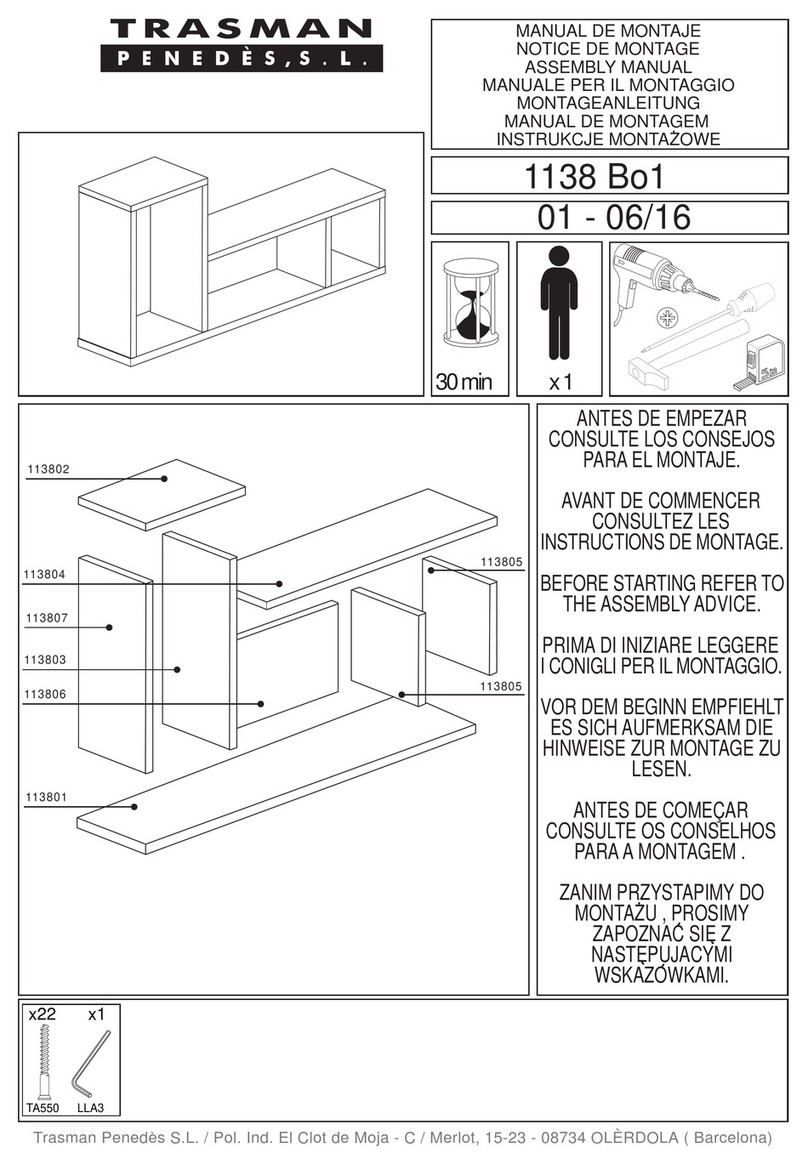
Trasman
Trasman 1138 Bo1 Assembly manual
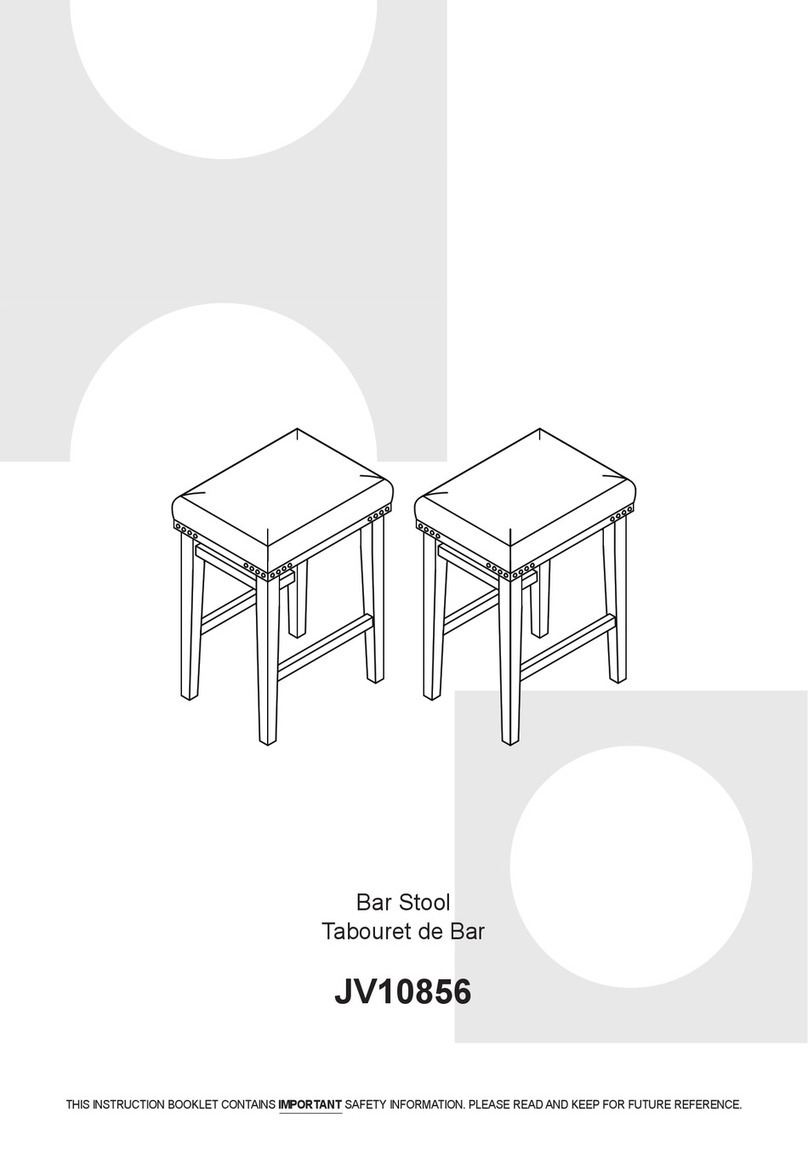
Costway
Costway JV10856 manual
